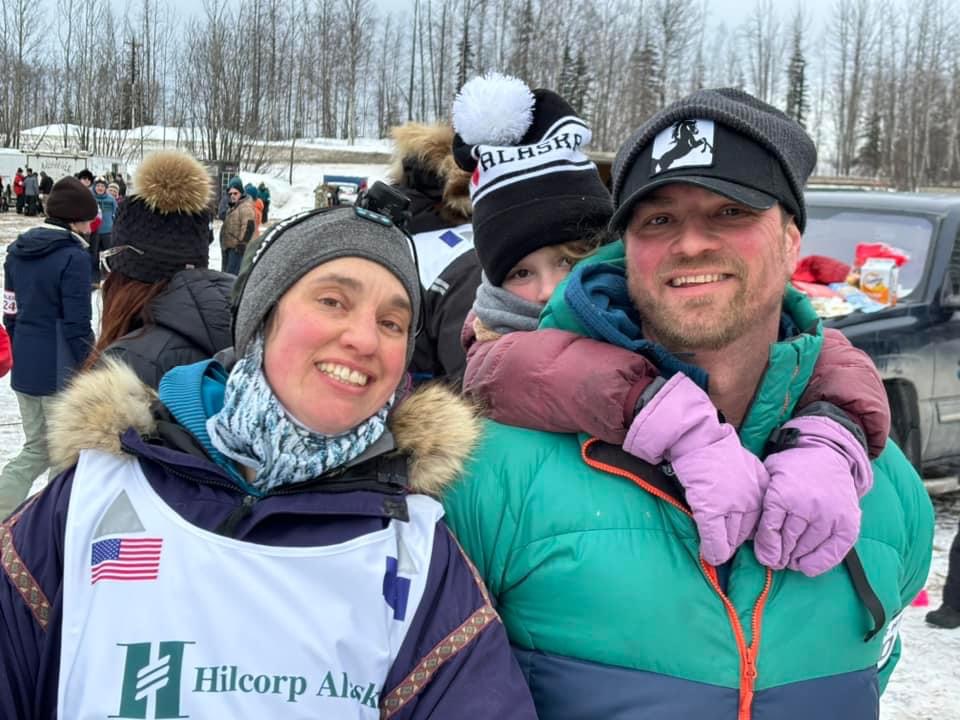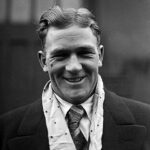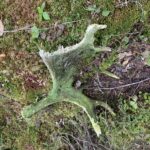The day before the race, I knew I was coming down with something. Wednesday had been vet checks and perhaps there was a bug flying around the room amongst the vets, or maybe it was Thursday when I signed over a thousand fan posters and then sat in a banquet hall with hundreds of people that had flown in from all over the country. Somewhere, I picked up a bug and by Saturday, while I whisked my Iditarider, Grand Marais resident Rena Rogers, around the back trails of Anchorage, I knew that unless I had one of those magical 24-hour bugs, I was soon to be really sick.
And that’s what happened. Nine months of Iditarod prep, training, and fundraising permeated by illness—a sore throat that turned to a cough, congestion, and runny nose. I’d cough so hard going down the trail I’d pee myself and dry heave on the back of the sled. At one point, I tried to take a much-needed nap but was so congested that when I laid down, I couldn’t breathe and I had to sit right back up, so I just hit the trail again. This wasn’t exactly the race plan I had in mind.
But in the post-covid era, we don’t like to bring attention to our illnesses. I didn’t want anyone else to get sick, certainly. And I was a little paranoid that maybe I would be asked to withdraw from the race, so as much as I could, I kept mum for a few days.
The team started with Pinto and Georgia in lead, but little did I know we’d be on wide open lakes for a number of miles to start. The leaders drifted right and while we were supposed to go between the crowds, these two kept plowing down the right side, forcing spectators to jump out of the way at the last second when they realized a large dog team was bearing down on them. When passing a team, they tried to go straight through another dog team causing a tangle, and then as a final straw, they went for another team’s food bucket as a musher was snacking.
That first run as the sun set, we watched dog teams ahead and behind. I could see eight or nine teams at a time, snaking along the wide winding river, all of us enduring so much to be there, relieved to finally be on the trail. This is one of my favorite memories from the race.
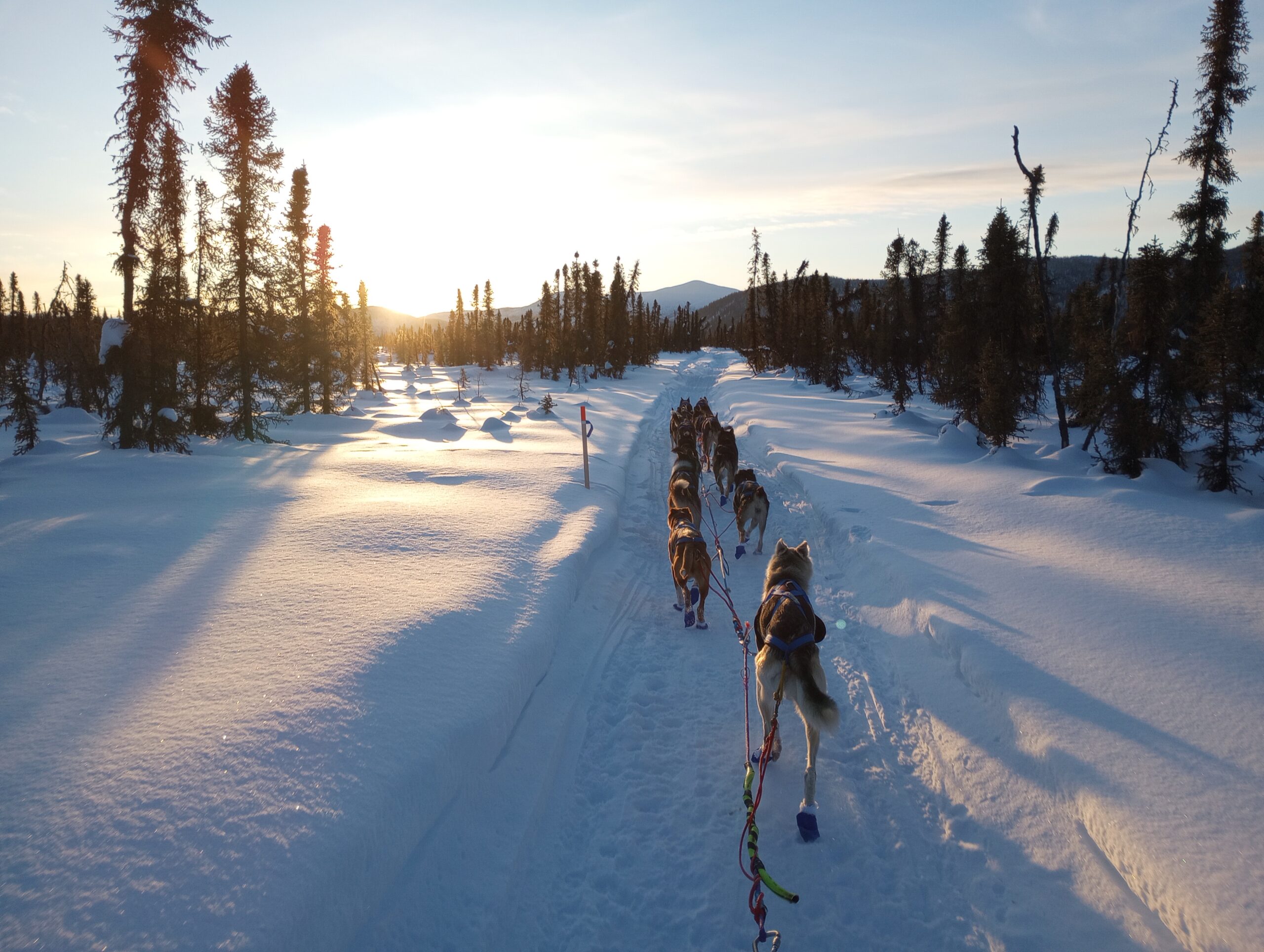
Every checkpoint was different, some had food for the mushers or hot water for the dogs. Others had little to offer, requiring us to melt snow and feed ourselves. I had hoped to ascend Rainy Pass in the daylight, as this was supposed to be one of the most scenic parts of the trail, but an unexpected stop in Finger Lake due to rough trail conditions meant going over Rainy Pass and then descending Dalzell Gorge at night.
Dalzell Gorge is known to be treacherous. The trail descends quickly from the Pass and winds over a creek many times, ping-ponging back and forth, sometimes over ice bridges. Suddenly we were dropping quickly and I realized we were in the gorge and then we came to a very abrupt stop—the entire team bunched up and within seconds dogs were fighting (a reoccurring problem I had due to several aggressive females on the team). Turns out we hit a creek where the ice bridge had gone out and my leaders didn’t want to cross, even though the water wasn’t that deep.
I broke up the fight and started untangling dogs, pulling leaders across the water and the rest of the team followed. Another dog team waited behind me. I had dogs getting their feet caught in the lines, resisting my pull, me throwing dogs across the water, unclipping and reclipping dogs. I was a sweaty mess but finally got everyone across. When the sled went over, I promptly tipped and from there on, the Dalzell Gorge treated me roughly. I tipped several times and at one point, went flying past Temper, my leader (he had gotten his line chewed and become loose). Amanda Otto behind me was clearly annoyed with this rookie musher who couldn’t get her act together and finally, when I turned down a creek the wrong way on glare ice, she got her chance to pass me, and did.
There is so much to write about and I can’t fit it all here. Here are some highlights from the rest of the trail:
After traveling through the Dalzell Gorge, we made it through 50 some miles of glare ice lakes, and bare ground (the Burn), which included steep up and down hills where I tipped my sled twice, hitting my hip and head.
I mushed 15 dogs to Takotna, where I took my 24-hour layover. Here I had two long periods of great sleep on a church floor and some yummy food cooked by checkpoint volunteers. The scenery coming in and leaving this area was incredible.
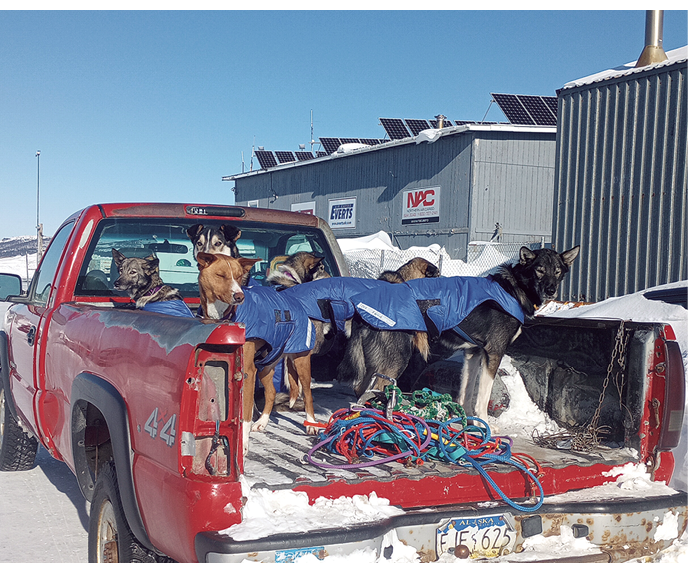
I had to drop Bruce 20 miles after Takotna for a sore shoulder and two more dogs at Cripple with sore shoulders (Tom and Andi). Then the weather took a big turn for the cold. It was at this point that my leaders started to really hesitate and I was having a hard time finding anyone in the team to lead.
I camped out along the trail between Cripple and Ruby. Someone said it was -40 that night. This was the only night in Alaska I saw the northern lights. I laid down a tarp and crawled in my sleeping bag next to Chicken and Pinto. The next morning it was very cold and it took us a long time to get to Ruby. I carried Ginger in the sled for a while and I should have dropped her at the checkpoint, but didn’t.
I took extra rest at Ruby but when I left there and got on the Yukon, Ginger and Lorna flat out did not want to go. I should have dropped them at the checkpoint earlier. My team picked up on their attitude and wouldn’t go either. Finally, I turned around and went back to Ruby and dropped the two that were quitting. Several hours later I tried again, but the team would not run down the Yukon. None of my leaders would lead. The dogs were all sitting down on the ice.
I tell people that there is nothing we can do to make sled dogs pull if they don’t want to. The dogs told me this that morning. We sat on the Yukon River and watched the sunrise. I had carried a woman’s ashes that far in my sled and I spread them there. I gave the dogs a snack and took some pictures. I’m sure there are things I could have done differently that may have led to a different outcome. I also know that our lack of winter at home and the poor training we had because of that, factored in. That morning, on the Yukon, I had no other choice but to end my race, so we turned back to Ruby and signed the papers.
The adventure didn’t end there, however. My team was flown from Ruby to Unalakleet on the coast in two bush planes, five dogs per plane. I sat next to the pilot in one plane and took in the route over which I would have mushed had my race continued. We spent 24 hours in Unalakleet in the returned dog lot, right on the shoreline of the frozen ocean. I shuttled between there where the dogs stayed and the checkpoint of the race, meeting race volunteers and talking with race officials, vets, and mushers, eating pizza and sourdough pancakes, and watching teams come and go. Two other scratched teams were flown in as well and settled in next to mine, as well as several dozen dropped dogs from various teams with various injuries. I slept on the floor of a dark gymnasium. The next day, 70 dogs flew cargo to Anchorage and I took a small commercial flight (with 10 seats). Now the dogs are on the road home.
We don’t know what next year will hold. I’d like to think that someday I might be able to finish the race, but that someday might not be for some time. Thank you to all of you who have supported us in so many ways this season. We could not have done this without you.


